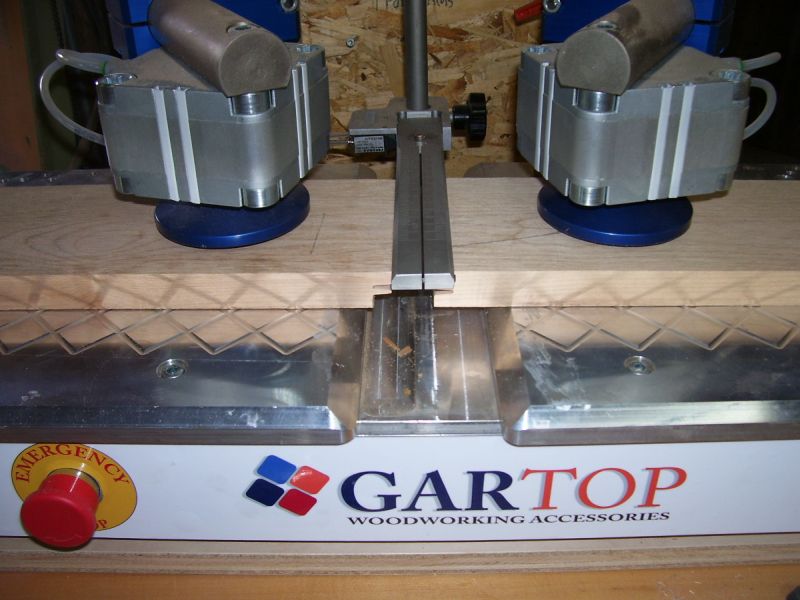Question
I am shopping for a straight line rip saw, and would like to know what to look for.
When does it make sense to look at used vs new?
There seem to be two basic designs: blade above chain/table and blade below chain/table. What are the pros and cons of each?
What are the optimal positions for anti kick-back fingers?
What type of saw would be better for thicker (8/4 +) stock vs thinner (4/4 -)?
What type of saw is better for short pieces vs long (6ft +)?
What are red flags that would eliminate a particular used saw?
When does it make sense to look at a gang rip instead?
Can you straight line one edge on a gang rip as effectively as a single blade SLR?
Forum Responses
(Solid Wood Machining Forum)
From contributor M:
- Chains, chains, chains - make sure the pyramidic spikes are still pointy or close to it, as this is the most expensive common repair. You'll see this on the auction sites with two nearly identical saws - one sells for twice what the other sells for.
- Signs that lubrication has been replenished. There is a piece of felt under the table that rubs against the back of the chains to lubricate them, if this is not greasy to the touch, run away.
If you can't find a Diehl, next up in my book is a Mattison, but they can be a real pain to get parts for when needed. Diehl is still running and can actually rebuild any of their older machines if it ever gets to that point.
Most of the overhead blade saws are newer Taiwanese models. None of them that I have seen is built anywhere near as well as the old Diehls and Mattisons, but they certainly are cheap. Still the same things hold true - chains and lubrication.
We have two Diehls that we bought used, both built in the mid 60's, both came out of SE USA furniture plants where they were run 8 hours or more a day 5 days a week their entire life. With a little care and feeding they do the same for us.
Buy a machine that was making glue joints, if you intend to make glue joints. A machine used as a busting saw never gets the same attention as a glue joint machine.
The Diehl has several advantages over the Mattison, the most important of which is that Diehl people really understand the machine and intend to stay in business. Parts are either in stock or have a short delivery. Mattison parts business, on the other hand, has been purchased and the parts people are not as knowledgeable, although they are adequate.
The Diehl chain will last almost forever if it is kept lubricated and if once a year or less if run really hard, the chains are swapped from right to left. This keeps the wear even. The reason they run so long is that the tracks are solid with multiple grooves. The Mattison chain runs on only two larger V's and I have seen the groove on the bottom of the chain wear completely through to the surface and the outside edges of the chain drop off. Also Mattison parts are very expensive. I got a price last year for a chain, track, sprockets, etc., for a 202. I don't have it in front of me right now, so this may be a little off, but it was well over $8,000. So you could think you are getting a bargain in a $6,500 machine and find that it cost $10,000 or more in parts and labor to make it right. So again, a very careful inspection is called for.
The Mattison does have some advantages. The guide is far superior to the Diehl guide. Most Diehl guides wobble so bad that you might as well have a crooked pine stick for a guide. This results in tapers, width variations, etc., that are not desirable. The double Diehl chain is subject to splinters falling between the chains and one must keep the hood clean of these slivers for various reasons. I was involved in a lawsuit once for fire damage that was caused by a careless operator who let the dust hood fill up with slivers.
The Mattison will glue joint material as short as 13". I do not have the Diehl spec in front of me as I am not in the office, but they are comparable.
Contributor C, I almost fell off my chair when I read your post about re-cutting the Diehl chain. I had no idea this could be done. After I was quoted a price of over 6k for a new chain and race, I re-cut the chain using thread files from McMaster (60 hours later, the chain was good as new). I still have no fingerprints.
